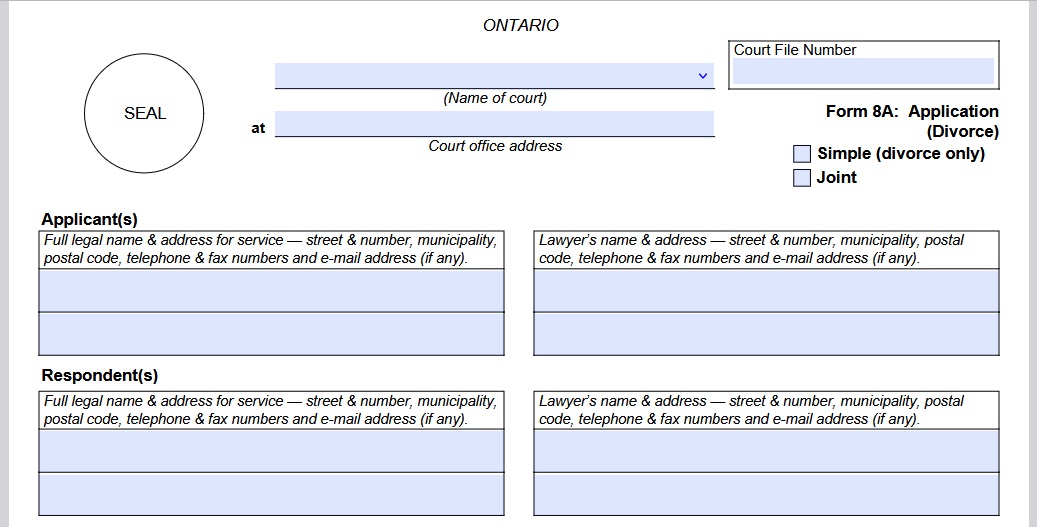Category: Family Law
Ontario Divorce Lawyers on Coercive Control

Understanding Coercive Control in Ontario Family Law
Coercive control refers to a pattern of behaviours that restrict a partner’s freedom, autonomy, and sense of safety. Although the term itself is more deeply embedded in criminal law reforms, family courts in Ontario increasingly reference it when assessing family violence, parenting arrangements, or the need for protection.
Coercive control includes actions that may appear minor in isolation but form a persistent pattern of intimidation, manipulation, or domination. Ontario’s Divorce Act (amended in 2021) explicitly includes “psychological, financial, and coercive behaviour” within the definition of family violence – highlighting that abuse extends far beyond physical harm.
Proving Infidelity in Divorce Court: Legal Strategy

Why Proof of Infidelity Can Still Matter in Ontario
Overview of Ontario’s No-Fault Divorce Law and Why Infidelity Alone Does Not Affect Divorce Eligibility
- Grounds for Divorce under the Divorce Act
Under the federal Divorce Act, the breakdown of the marriage is the only real requirement for obtaining a divorce.
There are three ways to show the marriage has broken down:- Living separate and apart for at least one year;
- Adultery;
- Mental or physical cruelty
Using adultery (infidelity) as a ground gives a “fault” option but is less commonly used in practice. Most divorces proceed via the one-year separation ground because it is simpler to establish.
Private Investigators in Infidelity Cases: What Lawyers Recommend

Why Infidelity Still Matters in Ontario Divorce Cases
Infidelity is often an emotionally charged issue for couples, and while Ontario follows a no-fault divorce system, it can still play a role in certain legal matters. Under the Divorce Act, couples in Ontario can obtain a divorce without proving wrongdoing by either spouse. This means that simply proving that one partner was unfaithful is not enough to receive a more favourable property division or spousal support order. The legal test for divorce is usually a one-year separation, regardless of the reason for the marriage breakdown.
How Divorce Lawyers Handle Co-Ownership of Pets?

Legal Status of Pets in Ontario
In Ontario, the legal system treats pets—whether cats, dogs, or exotic animals—as personal property, not as children. This classification often surprises people, especially those who view their animals as family members.
- Property, Not Dependents: Under Ontario law, pets are considered assets similar to furniture or vehicles. This means they are subject to division in a separation or divorce the same way other belongings are.
- No Pet Custody Laws: While some provinces have started exploring pet custody legislation, Ontario does not currently have a legal framework that allows courts to award shared “custody” or “access” based on the pet’s best interests.
How a Divorce Lawyer Builds a Strategy for Complex Family Dynamics?

Defining Complex Family Dynamics in Divorce
Blended families often involve stepchildren, multiple parental figures, or obligations from previous marriages. For example, determining child custody or support for a stepchild can raise questions of legal standing and emotional fairness. Similarly, cultural differences—such as religious practices, extended family influence, or gender role expectations—can lead to disputes over parenting time, decision-making, and even property division.
High-conflict personalities further complicate matters. If one party consistently refuses to cooperate, engages in manipulative behaviour, or uses children as leverage, a divorce lawyer must adopt a more protective and structured strategy, including the potential for court orders and third-party evaluations.
Divorce Act (Canada) Insights for Ontario Residents

What is the Divorce Act (Canada)?
Definition and History of the Divorce Act
The Divorce Act (Canada) was first enacted in 1986, replacing earlier legislation that varied significantly by province. It provided a unified, federal approach to divorce, simplifying legal processes for Canadians regardless of their location.
In 2021, the Act underwent significant amendments to modernize family law in Canada. These changes aimed to:
- Focus on the best interests of the child.
- Address issues such as family violence and its impact on parenting arrangements.
- Provide clearer guidelines on parenting time, decision-making responsibility, and the relocation of children after divorce.
Spousal Support Advisory Guidelines Ontario

What are the Spousal Support Advisory Guidelines (SSAG)?
The Spousal Support Advisory Guidelines (SSAG) plays a crucial role in Ontario’s family law system, serving as a framework for determining spousal support amounts and durations. Established to promote fairness and consistency, SSAG is not legally binding but widely referenced by courts and lawyers during spousal support negotiations. Here’s an in-depth look at these guidelines and their significance:
Definition and Purpose of SSAG in Ontario’s Family Law System
The SSAG provides a structured approach to calculating spousal support by considering key factors such as:
Ontario’s Family Responsibility Office (FRO)

What is the Family Responsibility Office (FRO)?
The Family Responsibility Office (FRO) is an Ontario government agency tasked with the enforcement of court-ordered child and spousal support payments. Operating under the Family Responsibility and Support Arrears Enforcement Act, 1996, the FRO plays a critical role in ensuring families and dependents receive the financial support they are entitled to under Ontario law.
Mandate of the FRO
Certificate of Divorce in Ontario Guide

What is a Certificate of Divorce?
A Certificate of Divorce is an official legal document issued by the Ontario court system to confirm that a marriage has been legally dissolved. It is an essential piece of evidence that the divorce process has been finalized and that both parties are no longer legally bound as spouses.
Under the Divorce Act and Ontario family law, the Certificate of Divorce serves several critical purposes:
- Proof of Legal Dissolution
It confirms that a divorce judgment has been granted and has taken effect, meeting the requirements set out by the Divorce Act.
Form 8A: Divorce Application Guide and Download

What is Form 8A?
Form 8A is the official document used in Ontario to apply for a divorce. It is a standardized application form required to initiate divorce proceedings under Canadian family law. This form is specifically used when spouses are seeking an uncontested divorce or filing for a joint divorce, where both parties agree on all major issues, including child custody, child support, spousal support, and property division.
Purpose of Form 8A
The primary purpose of Form 8A is to streamline the divorce process for couples who have resolved all disputes amicably. Unlike contested divorces, which require extensive legal proceedings, Form 8A facilitates a simpler, more efficient application process.
